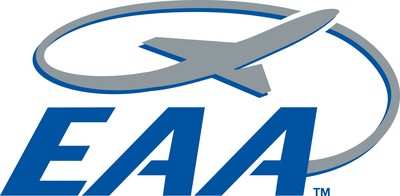Fri, Jan 01, 2016
Fatal Accident Total Down 20 Percent; EAA Strives To Build On Improvement
The safety level of homebuilt aircraft continues to improve, as fatal accident totals have dropped significantly over a 12-month period covering much of 2015, according to data analyzed by the Experimental Aircraft Association (EAA).

The totals, which include fatal accidents during the 2015 federal fiscal year (October 2014 through September 2015), showed that fatal accidents in amateur-built aircraft registered in the Federal Aviation Administration’s experimental category fell 20 percent from the previous 12-month period. The specific totals indicate 40 fatal accidents in those aircraft during the period, compared to 51 during the prior year.
In addition, all fatal accidents for the experimental category that includes racing aircraft, those used for exhibition only, research-and-development, and some types of light-sport aircraft, also fell. Those fatal accidents fell from 68 to 61 during the 12-month measurement period. The fiscal year 2015 totals also bettered the FAA “not-to-exceed” goal of 64 for that period.
“This is excellent news to see this type of reduction in fatal accident numbers, which are already smaller than other types of popular recreational pursuits, such as paddle sports, horseback riding, and driving all-terrain vehicles,” said Sean Elliott, EAA’s vice president of advocacy and safety. “However, when discussing small totals such as those in homebuilt aviation, even an uptick of three to five accidents per year is a major percentage increase. That’s why it’s so important for EAA and the entire amateur-built aviation community to continue focusing on safety and education, which is always more effective than additional regulation.”
Just as important as the raw numbers within the data are several factors that include an increased number of flight hours in recent years and an increasing total of amateur-built aircraft on the FAA register.
EAA is continuing its aviation safety focus with such efforts as recent FAA approval of an additional safety pilot during initial flight testing; a focus on transition and recurrent training; added focus on safety and proficiency through communications such as EAA’s flagship Sport Aviation magazine; and the inaugural Founder’s Innovation Prize competition that seeks new concepts to reduce loss-of-control accidents in amateur-built aircraft, one of the leading causes of fatal accidents. EAA has also been a major contributor to the FAA’s General Aviation Joint Steering Committee safety groups that bring new safety ideas to the flying community.
More News
Ultrahigh Frequency (UHF) The frequency band between 300 and 3,000 MHz. The bank of radio frequencies used for military air/ground voice communications. In some instances this may >[...]
During The 7 Second Descent, There Was Another TAWS Alert At Which Time The Engine Remained At Full Power On October 24, 2025 at 2115 mountain daylight time, a Cirrus SR22T, N740TS>[...]
From 2009 (YouTube Edition): Educational Organization Aims to Inspire by Sharing Tuskegee Story Founding leader Don Hinz summarized the Red Tail Project’s mission in simple, >[...]
“This feels like an important step since space travel for people with disabilities is still in its very early days... I’m so thankful and hope it inspires a change in m>[...]
Also: New Katanas, Kern County FD Training, IndiGo’s Botched Roster, MGen. Leavitt Named ERAU Dean The Australian Transportation Safety Bureau (ATSB) has wrapped up its inves>[...]
 ANN's Daily Aero-Term (12.19.25): Ultrahigh Frequency (UHF)
ANN's Daily Aero-Term (12.19.25): Ultrahigh Frequency (UHF) NTSB Prelim: Cirrus Design Corp SR22T
NTSB Prelim: Cirrus Design Corp SR22T Classic Aero-TV: The Red Tail Project--Carrying the Torch of the Tuskegee Airmen
Classic Aero-TV: The Red Tail Project--Carrying the Torch of the Tuskegee Airmen Aero-News: Quote of the Day (12.19.25)
Aero-News: Quote of the Day (12.19.25) Airborne 12.17.25: Skydiver Hooks Tail, Cooper Rotax Mount, NTSB v NDAA
Airborne 12.17.25: Skydiver Hooks Tail, Cooper Rotax Mount, NTSB v NDAA



